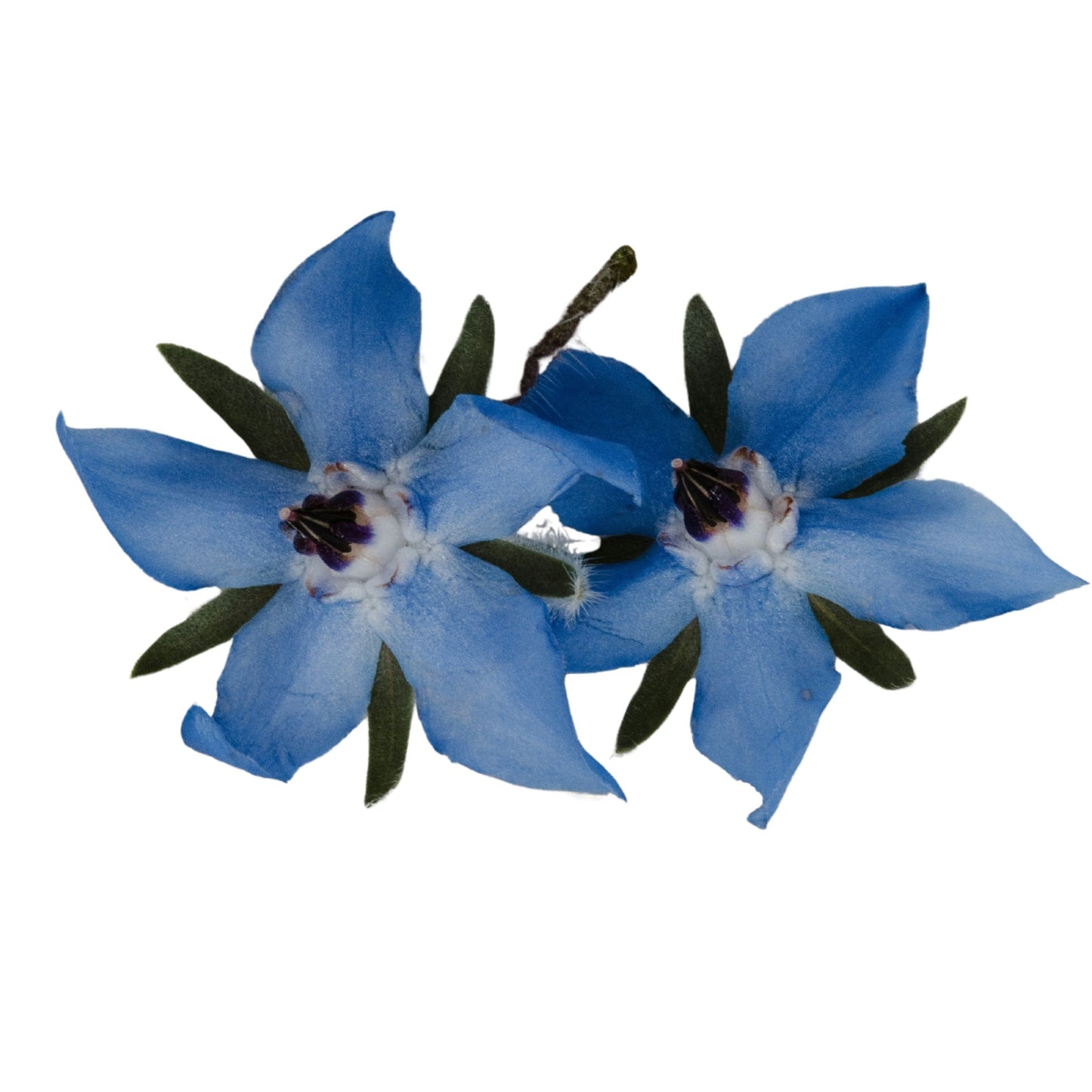Jonquil
Borage Azure Blue - 1 Gram
Borage Azure Blue - 1 Gram
Couldn't load pickup availability
Azure Blue Borage (Borago officinalis) is a hardy annual herb known for its vibrant sky-blue, star-shaped flowers and soft, hairy leaves. This is a beautiful, pollinator-friendly herb with edible flowers and a range of garden benefits. It grows quickly and blooms over a long season. The flowers are edible with a mild cucumber-like taste, perfect for garnishing drinks, salads, or desserts.
This plant is a magnet for bees and other pollinators, making it an excellent companion in vegetable gardens. It also self-seeds easily and can become a natural feature in cottage-style or wildlife gardens.
Sowing Time:
Indoors: Start in late winter to early spring
Outdoors: Sow directly from mid-spring to early summer
In warm climates, sow again in early autumn
Soil:
Well-drained, moderately fertile soil. Borage tolerates poor soil but prefers it slightly moist and not too acidic.
Sowing Depth & Spacing:
Sow seeds 1–1.5 cm deep
20–30 cm apart, as plants can grow bushy
Thin seedlings once they’re a few cm tall
Sunlight:
Full sun is ideal, but will tolerate partial shade
Watering:
Water regularly, especially during dry spells. Avoid overwatering—borage is drought-tolerant once established.
Germination:
Typically 7–14 days
Height:
Grows 60–90 cm tall with branching stems and large leaves
Flowering:
Starts about 8 weeks after sowing and continues all summer
Growing Tips
Staking:
Tall plants may flop—stake or support in windy spots
Self-seeding:
Let a few flowers go to seed if you want them to reappear next year
Companion Planting:
Great next to tomatoes, squash, and strawberries; helps attract pollinators and may deter pests like tomato hornworm
Harvesting:
Flowers: Pick fresh in the morning once fully open
Leaves: Best harvested young before they become coarse
Common Pests & Problems
Aphids
Symptoms: Clusters on stems and undersides of leaves
Control: Blast off with water or use insecticidal soap
Powdery Mildew
Symptoms: White powdery coating on leaves in humid or overcrowded conditions
Prevention: Provide good air circulation, avoid overhead watering
Slugs & Snails
Symptoms: Ragged holes in young seedlings
Control: Use beer traps, hand-picking, or copper tape barriers
Root Rot
Cause: Overwatering or poor draining soil
Prevention: Ensure soil drains well; allow soil to dry slightly between waterings
Share


